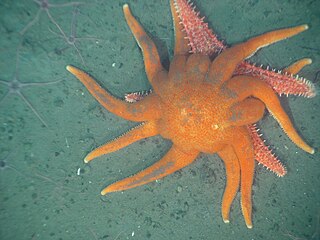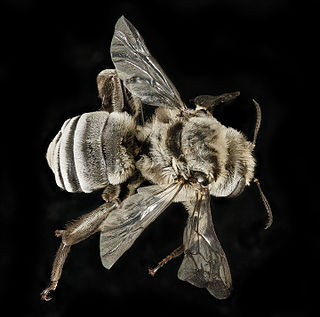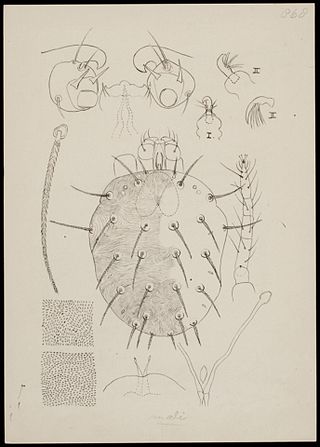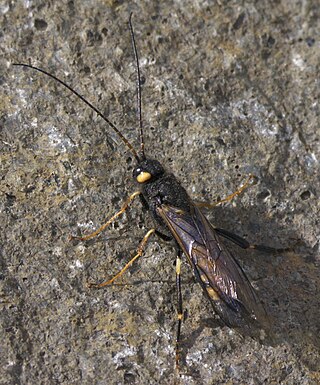
Rorquals are the largest group of baleen whales, comprising the family Balaenopteridae, which contains nine extant species in two genera. They include the largest known animal that has ever lived, the blue whale, which can reach 180 tonnes, and the fin whale, which reaches 120 tonnes ; even the smallest of the group, the northern minke whale, reaches 9 tonnes.

The Clymene dolphin, in older texts known as the short-snouted spinner dolphin, is a dolphin endemic to the Atlantic Ocean. It is the only confirmed case of hybrid speciation in marine mammals, descending from the spinner dolphin and the striped dolphin.

The Valvatida are an order of starfish in the class Asteroidea, which contains 695 species in 172 genera in 17 families.

Rhinocheilus is a genus of snakes, commonly called the long-nosed snakes, in the family Colubridae. The genus is native to the western United States and Mexico.

The finetooth shark is a species of requiem shark, in the family Carcharhinidae, found in the western Atlantic Ocean, from North Carolina to Brazil. It forms large schools in shallow, coastal waters, and migrates seasonally following warm water. A relatively small, slender-bodied shark, the finetooth shark can be identified by its needle-like teeth, dark blue-gray dorsal coloration, and long gill slits. It attains a maximum length of 1.9 m (6.2 ft). The diet of this species consists primarily of small bony fishes, in particular menhaden. Like other members of its family, it is viviparous with females giving birth to two to six pups in estuarine nursery areas every other year.

Karenia is a genus that consists of unicellular, photosynthetic, planktonic organisms found in marine environments. The genus currently consists of 12 described species. They are best known for their dense toxic algal blooms and red tides that cause considerable ecological and economical damage; some Karenia species cause severe animal mortality. One species, Karenia brevis, is known to cause respiratory distress and neurotoxic shellfish poisoning (NSP) in humans.

Colus stimpsoni, common name the Stimpson's colus, is a species of sea snail, a marine gastropod mollusk in the family Colidae, the true whelks and the like.
Hyocephalidae are a small family of Heteroptera which are endemic to Australia.

Conus burryae, common name Mrs Burry's cone, is a species of sea snail, a marine gastropod mollusk in the family Conidae, the cone snails and their allies.
Conasprella sauros is a species of sea snail, a marine gastropod mollusk in the family Conidae, the cone snails and their allies.
Sayella fusca, common name the brown sayella, is a species of minute sea snail, a marine gastropod mollusk or micromollusk in the family Pyramidellidae, the pyrams and their allies.

Solaster stimpsoni, common names Stimpson's sun star, sun star, orange sun star, striped sunstar, and sun sea star, is a species of starfish in the family Solasteridae.
Nurteria bicolor is a species of fly from South Africa, first described by Octave Parent in 1934. It belongs to the genus Nurteria and the family Dolichopodidae.
Brachinus texanus is a species of ground beetle in the genus Brachinus, in the family Carabidae . It is found in North America. Like other bombardier beetles, it can spray a boiling, corrosive liquid from its abdomen if provoked, and as such should not be handled.

Melitoma is a genus of chimney bees in the family Apidae. There are about 13 described species in Melitoma. Found in the Nearctic and Neotropics.

Linopodes is a cosmopolitan genus of mites in the family Cocceupodidae. There are at least two described species.

Neotrombidium is a genus of velvet mites and chiggers in the family Neotrombidiidae. There are at least three described species in Neotrombidium.

Panonychus is a genus of spider mites in the family Tetranychidae. There are about 16 described species in Panonychus.

Urocerus is a genus of horntails in the family Siricidae. There are about eight described species in Urocerus.
The Chinese spiny lobster, also known as the green lobster or Hong Kong rock lobster, is a member of the genus Panulirus of spiny lobsters endemic to the East and South China Seas. It is a moderate size, commercially important species with a range that extends along the east coast of China from Shanghai to Hong Kong. It has also been found in the Taiwan Strait.













